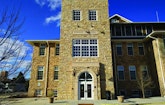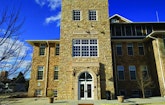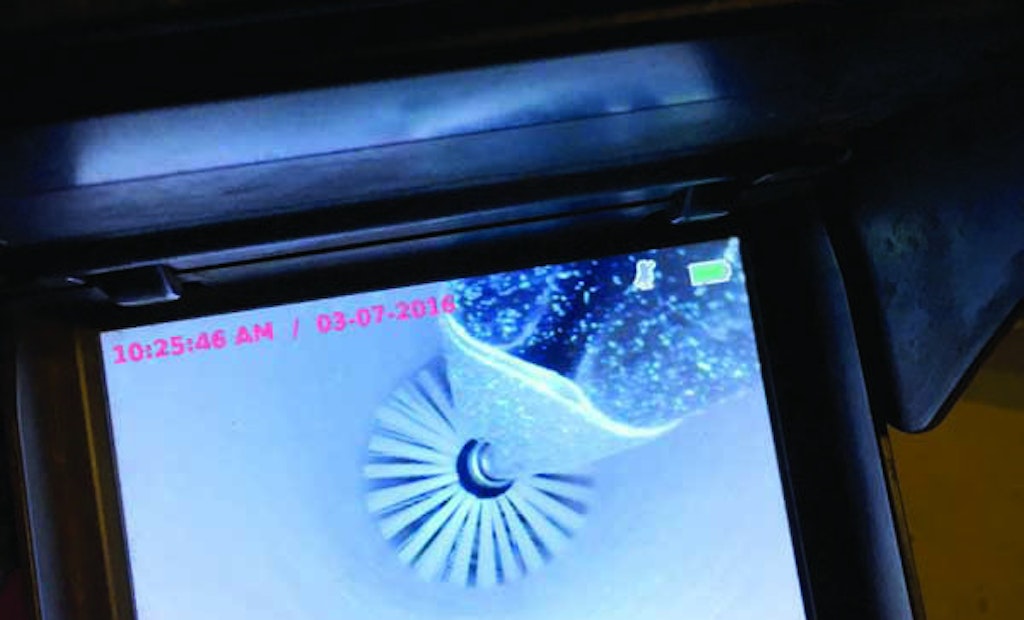Interested in Relining/Rehab?
Get Relining/Rehab articles, news and videos right in your inbox! Sign up now.
Relining/Rehab + Get AlertsThe town of Windsor, Colorado, had completed a large-scale remodel of its town hall and surrounding grounds. The landscapers and pavers could not know they had just laid the finishing touches of a beautiful makeover above two coolant lines on the brink of failure.
The two 113-foot-long, 4-inch Schedule 40 PVC lines had begun losing glycol.
When the city’s maintenance supervisor found himself repeatedly topping off the system’s coolant levels, he called on Snowbridge Inc. of Breckenridge, Colorado. Founded in 1976 by the parents of its current owners, Bill and Chris Tatro, Snowbridge has grown into a 16-person operation serving the central Rocky Mountain region.
Cured-in-place pipe is one of the company’s specialties, and Snowbridge has been lining pipes since 2004. “Our dad was always looking for the right tool for the job,” says Chris. “He didn’t shy away from new tools and products that came from overseas. In fact, reinstatements can be a problem in CIPP, but I think we owned either the first Picote Miller in the country or were right in line behind the guy who did.
“I operate the company same as Dad did. I don’t use just one tool for everything but find the correct product for each job.”
Forming a plan
Tatro thought the Windsor project would be another CIPP candidate, but first he had to figure out what he was dealing with. Unlike sewer lines laid at a grade so they can drain, the coolant lines were level. The glycol in the lines made them difficult to inspect.
“The video we received didn’t tell us much,” he says. “We video-inspected it for ourselves, but the glycol made it impossible to see anything. We just couldn’t tell if there were holes or an actual break.”
The project also presented some challenges for liner inversion. The two lines, running parallel 18 inches apart, made a 45-degree bend 98 feet from the mechanical room side. The last 12 feet rose vertically to the cooling tower through 90-degree, pressure-rated elbows — an almost impossible obstacle due to their tight radius.
“I had concerns about getting a liner that long to negotiate a 90-degree elbow and then dragging the rest of the liner through it. I could also have a problem with an 8-foot tail hung up at the 45. If I worked from the other end, I’d have to get 100 feet of liner to the 90 and then push it up that last 12 feet. Either way I looked at it, I didn’t like the odds.”
The pipe also had to endure the water-glycol mix at temperatures up to 90 degrees at up to 50 psi. “I know there are quality CIPP products out there made to handle pressure, temperature and chemicals. But now you’re talking about a sturdier, reinforced liner, making it even harder to negotiate the turns,” Tatro says.
Open-cut replacement had been ruled out from the beginning due to the newly completed renovation of the grounds, concrete infrastructure and two electric transformers next to the cooling tower. At that point, Tatro turned to the Picote Pipe Coating System, which is designed to renovate pipes 1 1/4 to 8 inches in diameter up to 60 feet in length. Its brush-cast, resin coating forms a new wear-resistant, noncorrosive pipe from the existing one.
The Picote system can be used on a wide range of pipe materials, from PVC to cast iron, concrete and clay. The coating layer builds at approximately 1/16 inch per pass, requiring two to four passes for a finished rehabilitation depending on desired thickness. The urethane coating dries to the touch within hours, reaching full hardness in seven days. The cured coating remains flexible enough to withstand shock and bending and extends a pipe’s service life up to 50 years.
Furthermore, unlike inversion-process liner systems, the brush-cast coating application isn’t limited by abrupt angles. And since the brush-cast pipe coating can be used to line pipes subject to high pressure, high temperature and frequent exposure to some chemical substances, Tatro considered it an ideal choice for this job — that is, if it passed his own tests.
Coating with confidence
“I was on a tight schedule, and I needed them to provide data on the resin. They had no problem helping me with that. The coating material is rated to 248 degrees, comfortably handling the 90 degree range and even with some pressure on it.”
Tatro got the Picote coating pump and resin through HammerHead Trenchless Equipment, then studied how much material to apply and at what rate to move the applicator brush to ensure a perfect coating. He even built a model of the system. “Practicing it in my shop, I can see what I’m doing. Then I don’t have to guess while doing it blind, basically, underground in the actual job.”
Allowing each pass to dry before brushing the next, he built the coat up in three layers. Then Tatro cut cross sections of the pipe to determine the uniformity of the coat’s build. He gave special attention to the 90-degree fittings, drilling holes at the back of the elbows to see if the brush-coat method made the resin skip or thin out in its tight radius. He checked the beginning and end of the pipe to make sure the bond created a sound, leak-proof joint for reconnection to the system.
He also studied the cross sections for annular separation. “Not all contractors understand this, but any thermal-set resin you install, whether it’s epoxy or poly, will ultimately shrink some.
The annular space between host surface and resin might only be half a millimeter, but it varies from product to product. I need to know what the risk of separation and water getting between the lining and the host pipe is before I’ll use any product on a customer’s job.”
But Tatro liked what he saw. “It didn’t have a problem in the 90-degree fitting, which was impressive. The coat was uniform thickness throughout the pipe. It bonded well. I had the pace of application down. I was confident this was the legitimate solution.”
Site preparation
Tatro’s four-man crew started with a vacuum truck to suck the coolant out. Then they pressure jetted the line to remove the glycol’s slimy residue. Now they could get clear video to see what they were dealing with. “Seventy-five feet in we found one full circumferential crack with about a 1/4 inch separation. Sand and gravel had infiltrated.”
The crew performed a CIPP point repair, allowing 24 hours of cure time before removing the packer. Next, the crew prepared the pipe surface. After thoroughly scuffing the PVC and point repair, the crew finished with a pig and vacuum truck to clear the pipe of PVC shavings.
To quality-check the point repair, Tatro set up a vacuum test. Snowbridge prefers to test pipelines with water, but in this case Tatro did not want to reintroduce water to the pipe prior to coating it. Usually Tatro holds 15 inches of vacuum for 2 1/2 minutes to test a repair, but he held it for 30 minutes before he stopped. “I wanted the pipe to be as sound as possible prior to the coating.” Repairing the crack and prepping the pipe took three days of the total project time.
Brush-casting process
Tatro’s crew set up the coating system to make the first passes from the mechanical room end of the pipes. Although the system generally has not been used for passes longer than 60 feet, Tatro planned for an overlap of at least 4 feet in the middle. So for this job, each pass extended 73 feet into the pipes — lengths never before attempted in the U.S. Each 73-foot pass took about 1 1/2 hours to apply, including time to clean the equipment before moving to the next pipe.
Snowbridge allowed five hours drying time before applying resin from the cooling tower end, which Tatro said was to ensure the brush’s bristles did not bind at the overlap.
They allowed the coat to set overnight and repeated the application the next day, finishing up with a third and final coat the day after. The three application passes required 130 pounds of resin — all delivered through a 1/4-inch hose. In all, the crew spent seven days on site.
Final video inspection showed a smooth surface that transitioned cleanly past the point repair. In fact, Tatro said he wouldn’t have known it was repaired had he not done the work himself. “Then,” Tatro says, “I requested the customer wait seven days, which Picote says is time for the full cure. I just didn’t want to risk marring the coating.”
David French, the Windsor Public Works Department’s facilities manager overseeing the pipe renovation project, returned the system to service after 14 days, encountering no further issues with loss of pressure. After it had been running for four weeks, Tatro called to check on it. “Their mechanical contractor had been watching for symptoms of anything going wrong but said it was running great!”










